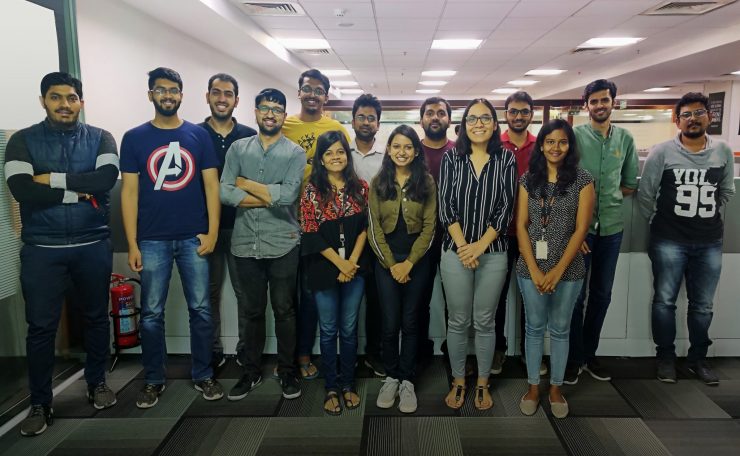The CPG or Consumer Packaged Goods industry has witnessed massive disruptions and changes in the past few years. It is not just the pandemic that has affected this sector immensely, if the study conducted by Bain & Company is to be believed. As per this, from the year 2012 to 2016, 85% of the 50 largest companies saw a huge decline in both revenue and profits.
It was believed that the biggest reason behind this drop was the emergence of agile and smaller brands that were able to capture the market share throughout every category and country.
Such a shift forced the industry leaders to dramatically speed up their digital timelines and even create new operating rhythms to continue being competitive, overcome hurdles and retain customers.
Pandemic’s impact on the CPG industry
COVID-19 pandemic forced almost every business to transform digitally overnight. The same situation was faced by the CPG spaces, too. With such a massive shift to online buying, businesses realized that they did not have sufficient tools to adjust to such extreme changes.
Similarly, the subject matter experts did not have precedents of such a global event to react as they rely totally on data. In simple terms, many businesses weren’t agile enough with their data, therefore reacting to such a major shift proved challenging.
This newest shift shed light on micro trends in the CPG industry, such as:
1- Demand forecasting became critical – Some products were highly in demand, while others products weren’t. This led to inaccurate forecasting as business leaders dint had proper tools and resources in place.
2- Gaps in process efficiency – The retailers found it challenging to keep up with the volume and variety of transactions that were a result of increases in online shopping, in-store pick-up and in-store shopping. To keep up with the increased volume of data, the businesses had to re-evaluate their forecasting methods.
3- Shifts in buyer’s behaviour – Since people were staying indoors throughout the day, there was a rapid increase in online shopping, especially for household items. This resulted in the requirement of inventory optimization and the need for a deeper supply chain to align with the shifting demand.
Thankfully, AI or artificial intelligence presents new opportunities to thrive and expand even during such accelerating changes.
How can AI help the business?
The shifting targets, changing buyer’s behaviour, and new business models require reliable data to survive in this competitive market. And in order to make complete sense of the available data, the analysis capabilities of AI and machine learning (ML) can prove of great help.
In fact, many consumer brands are shifting towards AI quickly with just deep data and little AI operating experience in the hopes of developing agility using the data to handle the decision making easier.
The CPG leaders are no longer just interested in surviving; they wish to thrive in this modern environment of online shopping, too. And to do so, the requirement of fresh data is crucial to gain a better understanding of product demand, adjust the production and focus on supply accordingly.
Why do companies need AI and machine learning now more than ever?
Most companies that are investing in AI and machine learning are well-positioned with incredible amounts of data. But still, many of these companies feel like they are falling behind due to the unavailability of the right tools to mine and apply the data.
Thankfully, working with experts can prove of great help. Experts can employ the right tools and resources to extract predictive insights, therefore helping you to react to changes and even make an informed decision.
Employing machine learning and artificial intelligence can help your business remove technical barriers, allowing you to put the power of ML predictions in making daily business decisions.
Here is how AI is reshaping the CPG industry
AI has the capability of enhancing the CPG supply chain to make the business’s as-usual operations more streamlined. Here are a few ways in which it does the same:
1- More accurate demand forecasting and inventory management
For analyzing and interpreting significant amounts of data that are required to predict the supply and demand, not forgetting the new buying habits, seasonal changes and other things, sophisticated data-driven tools are crucial aspects.
The information generated from such tools can be used to accurately predict the inventory needs and prevent out-of-stocks and overstocks, as both of these can prove highly costly. With AI and machine learning, you can easily take this analysis to an all-new level, enabling the users of these data to detect the current marketing behaviours to conclude the future.
A case study on the logistics-related issue that was a result of the 2017 fidget spinner boom proposed that mining data from social media will become instrumental in recognizing emerging trends even before they blow up. This way, the logistics companies get the important lead time they require to get ready for the spikes in demand.
2- Lower transportation cost savings
Did you know it is possible for logistics companies to pay out up to 50% of their total costs on maintenance, transportations, fuel and parts? With AI-powered transportation management solutions, it is possible to enhance efficiency and reduce freight costs by consolidating less-than-truckload shipments and optimizing transportation routes.
Similarly, even predictive fleet maintenance systems can squeeze the mechanical issues at the earliest before they turn into costly breakdowns. What’s more? The advanced AI-powered weather monitoring technology can even assist with working around weather issues. In short, AI surely opens the door for huge opportunities.
3- Optimizes sales and promotions effectively
Yes, juicy discounts are indeed important to grab the customer’s attention, but there is more to the process. Consumers are rapidly turning to ecommerce for convenience, speed and enticing in-store promotions. In fact, these three elements play a crucial role in retaining customers. But still, it is quite challenging to pull out such promotions effectively as 72% of promotions are estimated to fail.
The incorporation of AI can assist the CPG teams to be more accurate in optimizing the in-store promotions. CPG team can even train ML algorithms on a huge amount of historical sales data to unveil important trends and opportunities. This, in turn, can guide the CPG team to apply for the most relevant price promotions at the right time and place.
Plus, such algorithms can benefit the teams to model the future sales performances seamlessly, enabling them to create revenue projections and even manage sales budgets accurately.
4- Enhance the understanding of in-store customer behaviour
Besides the numbers, another important element of enhancing physical retail’s performance is comprehending how the customers behave in-store and online. With AI, the retailers gain an intimate understanding of how the consumers interact with the products and displays, even beyond what they are capable of observing through sales data and numbers alone.
Using technology like artificial intelligence-powered analytics allows the sellers to notice small behavioural nuances like how much time a customer spends on a particular page or shelf or even how long their gaze lingers over something they wish to buy. Such minute observations can assist the teams in making small adjustments that can significantly enhance the shopper’s overall experience.
5- Affords substantial opportunities in the procurement
By affording substantial opportunities in procurement efficiency and efficacy, AI can free up professionals to focus on tasks that are more important or of higher value.
For instance, automating routine tasks leverages managing risks as well as ensures compliance. When the procurement team starts utilizing AI, it gains the opportunity to delegate daily tasks such as record keeping, checking invoices against contracts, digital assistance and even record keeping.
Plus, AI can detect duplication of invoices, cross-check contracts that have undergone numerous revisions by multiple people, like interpreting handwritten notes. AI can integrate third-party data and, upon mastering, can generate predictive analytics to strengthen the understanding of buyers’ behaviour.
What’s more? AI can uniquely adapt to the user, and the system can be customized to address specific challenges. The tool can comprehend how to learn rules and offer outcomes that can be unified into the existing systems to offer results in real-time.
The image-based AI, on the other hand, can help in improving the procurement process. For instance, your staff can send the product image to the organization’s database, and an AI program can easily determine the required item or one that seems equivalent.
With AI, you can easily enhance the operational efficiencies and save a lot because it uniquely allows the buyers to finish tasks that were impossible for humans to finish efficiently previously.
Wrapping up
The logistics landscape is constantly changing and evolving, especially when it comes to a sector as time-driven and complex as CPG. But thankfully, the implementation of AI technology can offer an endless number of opportunities to the CPG team to improve the way they optimize their sales, manage the inventory and comprehend their customers.
So, elevate your business today by incorporating AI technology and harnessing the benefits that await ahead. Connect with Teg Analytics today and let our experts deliver solutions that help your business to step into this brave new world of AI technology.

